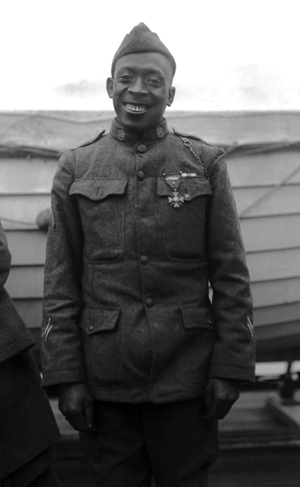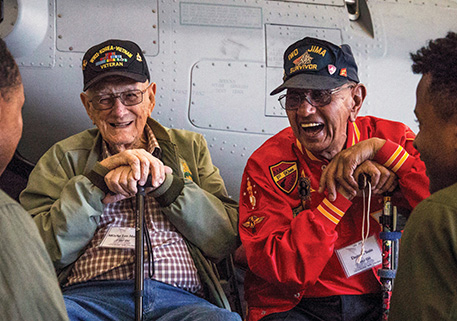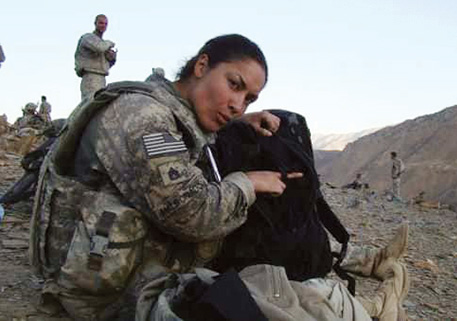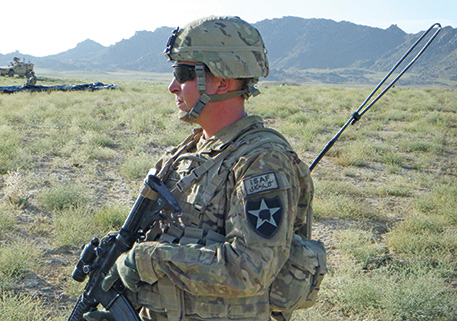DAV recognizes Black History Month

In the early pre-dawn hours of May 14, 1918, Army Pvt. Henry Johnson, part of the all-black 369th Infantry Regiment, took part in a five-man patrol to defend against enemy ambushes in the Argonne Forest in France.
At 2:30 a.m., 24 German soldiers attacked the patrol’s position. Johnson defended his comrades by throwing all the grenades he could find at the enemy and then fired his own weapon until it jammed. When the enemy soldiers swarmed the trench Johnson was defending, he fought them off with the butt of his rifle and then his bare hands.
Johnson, wounded 21 times, sent the Germans into retreat. This encounter became known as “The Battle of Henry Johnson” and was reported in national newspapers in the United States later in the year.
France subsequently awarded Johnson the Croix de Guerre avec Palme (War Cross with Palm), France’s highest award for valor. And in a memo later that same month, Gen. John Pershing, commander of the American Expeditionary Force during World War I, called Johnson’s actions “a notable instance of bravery,” and Johnson was promoted to sergeant.
But after the war, Johnson was nearly completely disabled due to his wounds. Despite his noted heroics, he and other black soldiers were denied medical care and disability pay. He would be posthumously awarded the Medal of Honor by President Barack Obama on June 2, 2015, but the recognition came far too late. Johnson died in poverty at 32 years old, according to the Smithsonian and a study released by the Equal Justice Initiative (EJI).
As we celebrate Black History Month, the EJI offers a historical and detailed account of the injustices black veterans like Johnson endured in the late 19th and early 20th centuries, including instances of violence and abuse, inequality of military pay and denial of earned veterans benefits.
During World War I, more than 350,000 African Americans served in segregated units. When World War II erupted, more than a million were drafted or volunteered to serve. The Korean War saw the decommissioning of some, though not all, segregated units, despite a 1948 executive order to integrate the military. And after entering the Vietnam War, America saw the highest proportion of black service members—but also casualty rates as high as 25 percent.
In spite of African Americans’ proud military heritage predating the Revolutionary War, the EJI study sheds light on the treatment of black veterans after service.
“It’s important that, as individuals and veterans, we show that the history of how our country treated minority veterans in the past is not a pleasant one,” said National Commander Delphine Metcalf-Foster, whose father was a Buffalo Soldier. “We should never forget the painful lessons this teaches. DAV knows the veteran community is made stronger by diversity, and we will continue our mission of advocacy for all veterans.”
Learn more
The entire EJI report can be found at https://eji.org/reports/online/lynching-in-america-targeting-black-veterans.






